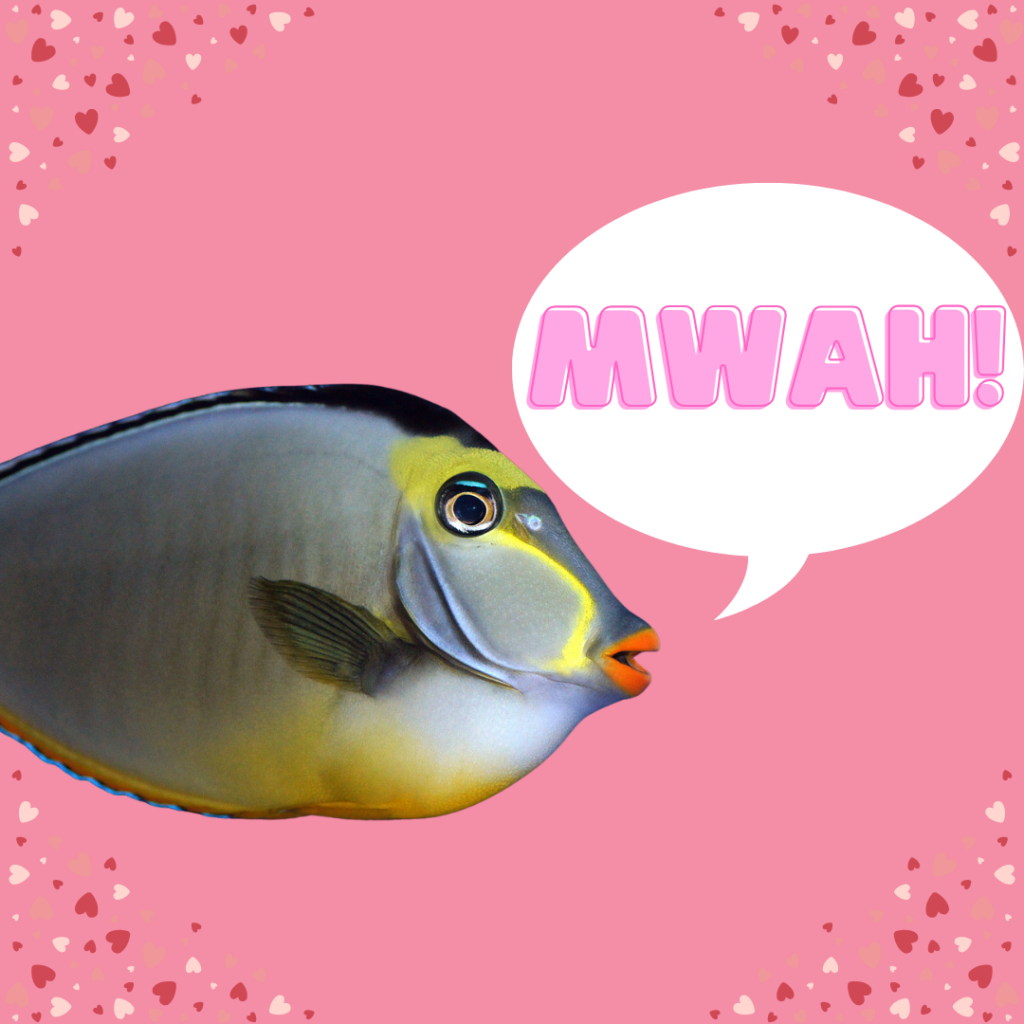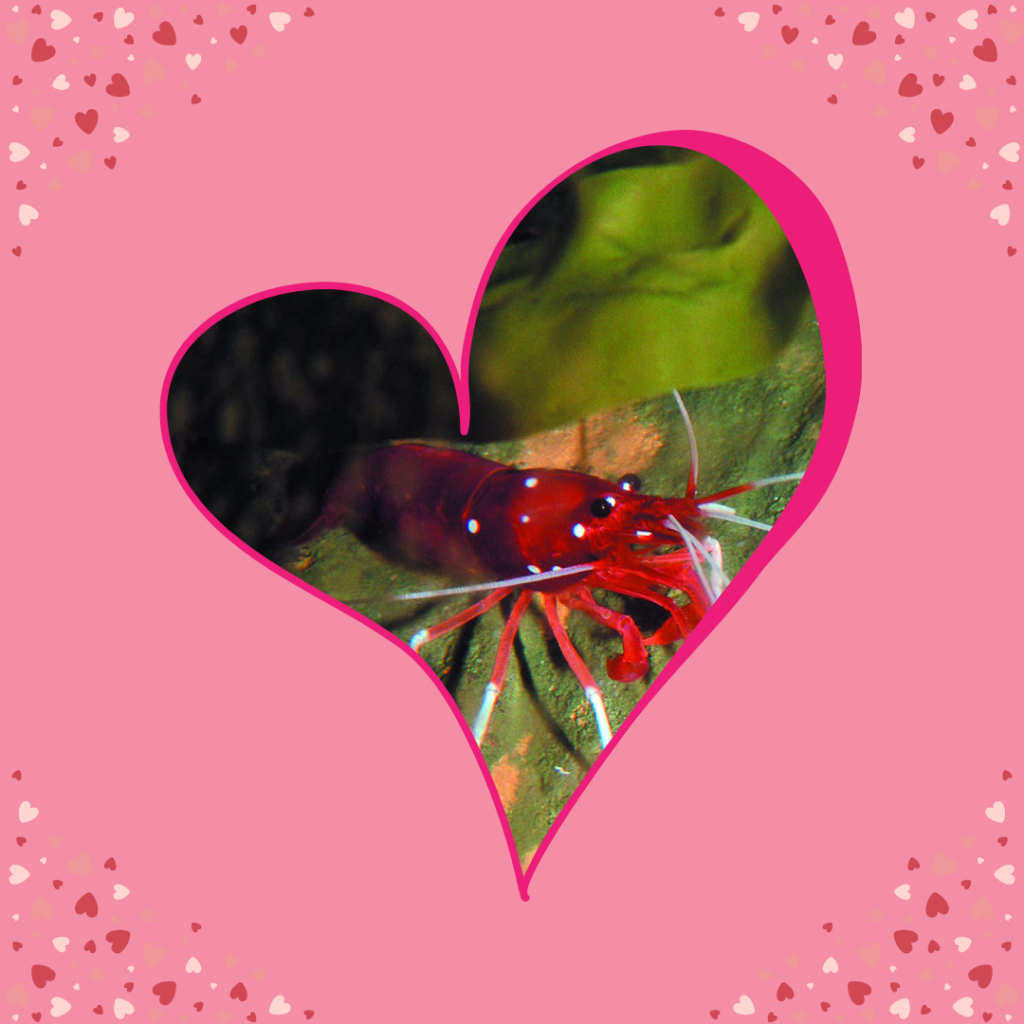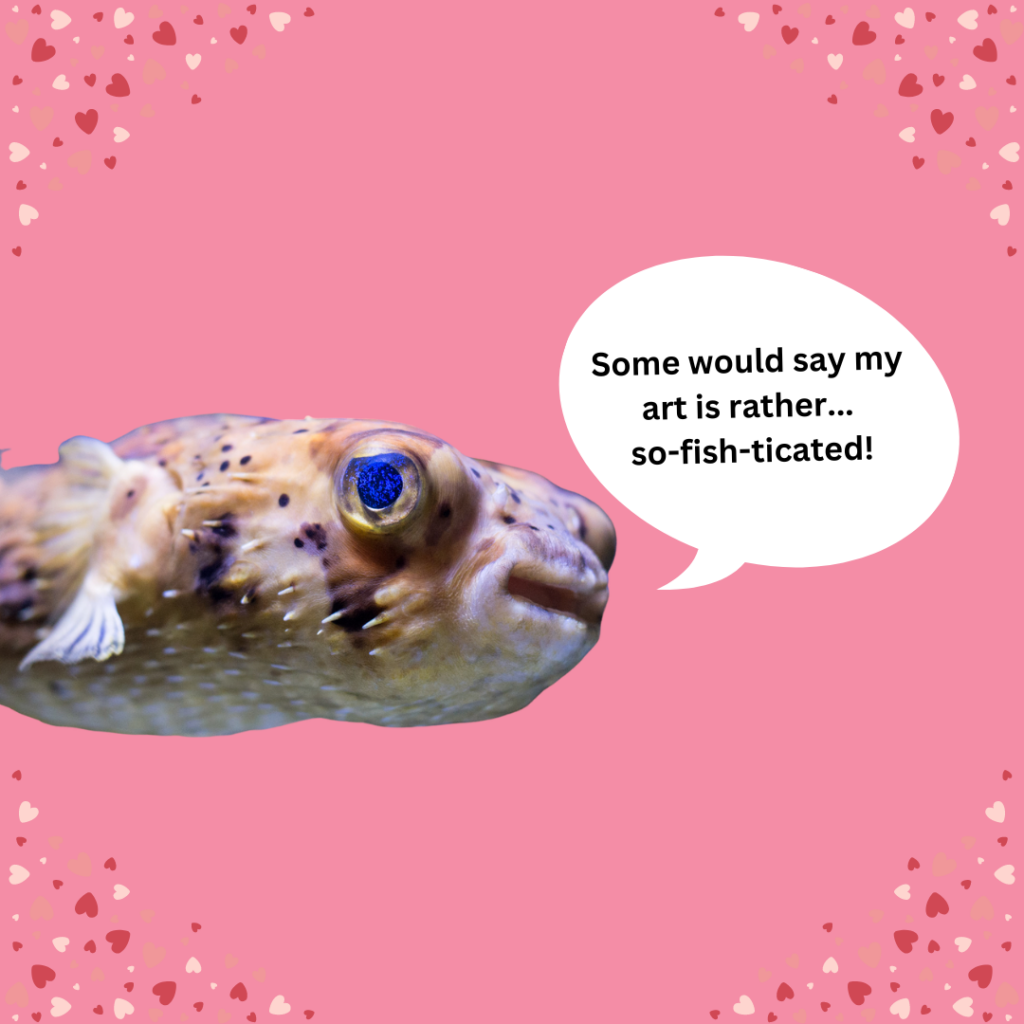We’re now into the season of love here at Tynemouth Aquarium, so we thought we’d take this oppor-tuna-ty to show off some fin-tastic facts relating with some of our creatures and their romantic charm.
From dancing damsels to tantalising terrapins, Here are six of our favourite Valentine’s Day themed facts based on our inhabitants right here at Tynemouth Aquarium – we hope you enjoy!
Fish Fact 1 – Lipstick Tang
Pucker up and see if you can spot our lipstick tang in one of our tropical reefs! Fun Fact – When they feel threatened they’ll flip their tail, exposing a modified scale said to be as sharp as a surgeon’s scalpel!

Fish Fact 2 – Dancing like a Damsel
A humbug damselfish will create a space within the reef to call home and dance around the area in the hope a female will join him. In other ways of attempting to attract a mate, many species like sergeant majors and rock cook wrasse will often change the colour of their scales to attract a mate.

Fish Fact 3 – A new meaning to choosing your heart over your head
A shrimp’s heart – along with other vital organs such as their stomach and ventral nerve cord – are inside of their heads due to the safety this part of the body provides over the tail-end.

Fish Fact 4 – Monkey business
Perhaps not a fish fact, but a cute note about one of our residents here at Tynemouth Aquarium nonetheless! Our common marmosets live in a family group, with mum Minnie and dad Miko first setting eyes on each other on 1st April 2015 and hitting it off. Since then they have had many offspring including the ones they currently live with now, Tupi & Gurani, Ant & Dec.

Fish Fact 5 – Tantalising Terrapins and their flirtatious fluttering
When some male turtles try to woo females to mate, they approach them underwater and then the turtle will face the other and flutter or vibrate its front claws around the female turtle’s head. When the female turtle catches sight of this and is amenable to the invitation, they drop to the aquatic floor.

Fish Fact 6 – Pufferfish and the art of love
The male pufferfish creates a delicate and striking nest in the sand that also serves as a sort of artwork to attract a female to lay her eggs. The male fish works for a week or more, using its fins to sculpt the sand into a series of concentric patterned rings. At the end of construction, the male will decorate parts of the ring with bits of shell. The structure can be six feet in diameter—a huge feat for a fish that is only five inches long! The rings of sand slow down the water current and create a flat area of finer sand in the middle, which is a better place for the female to lay her eggs.

